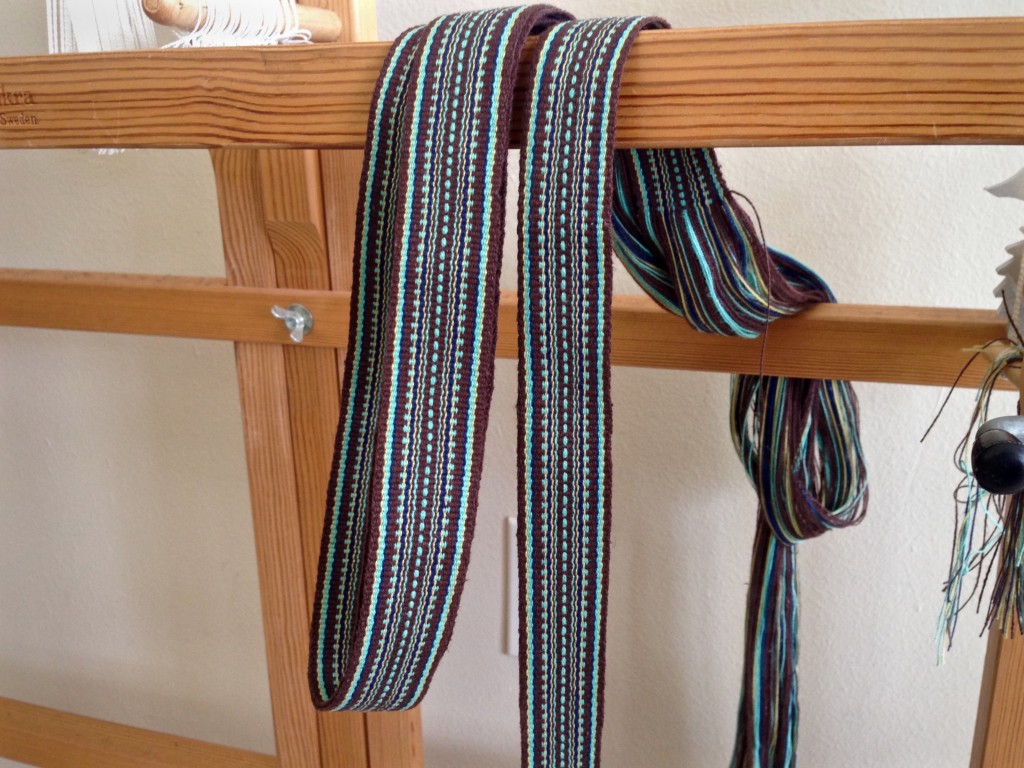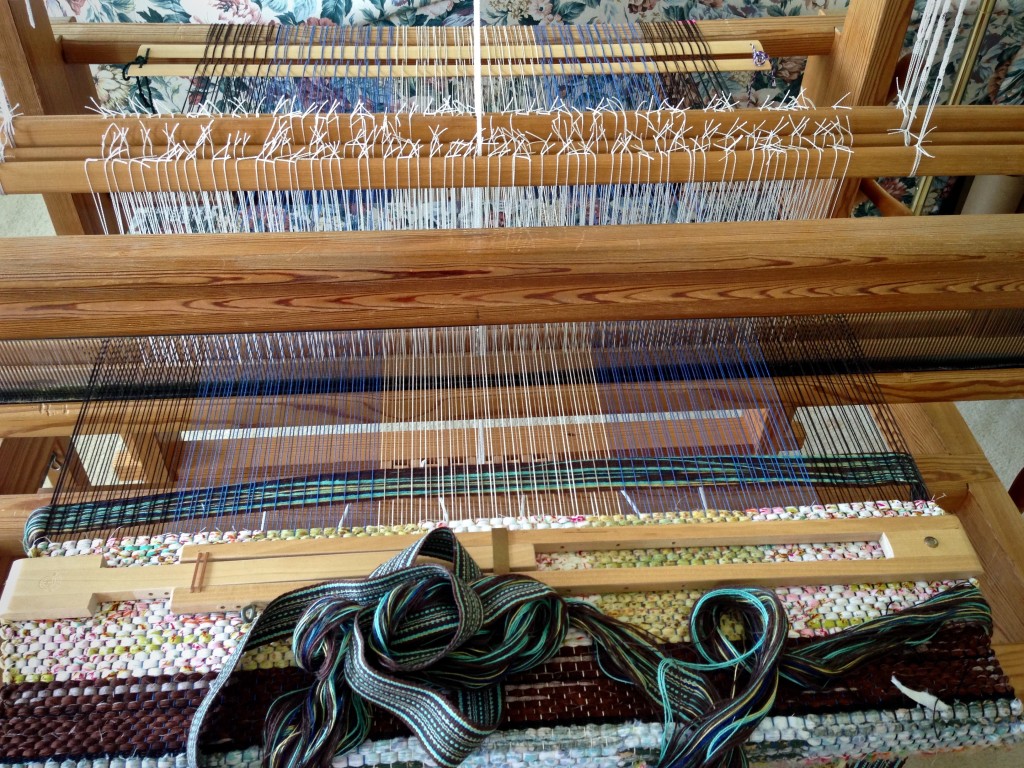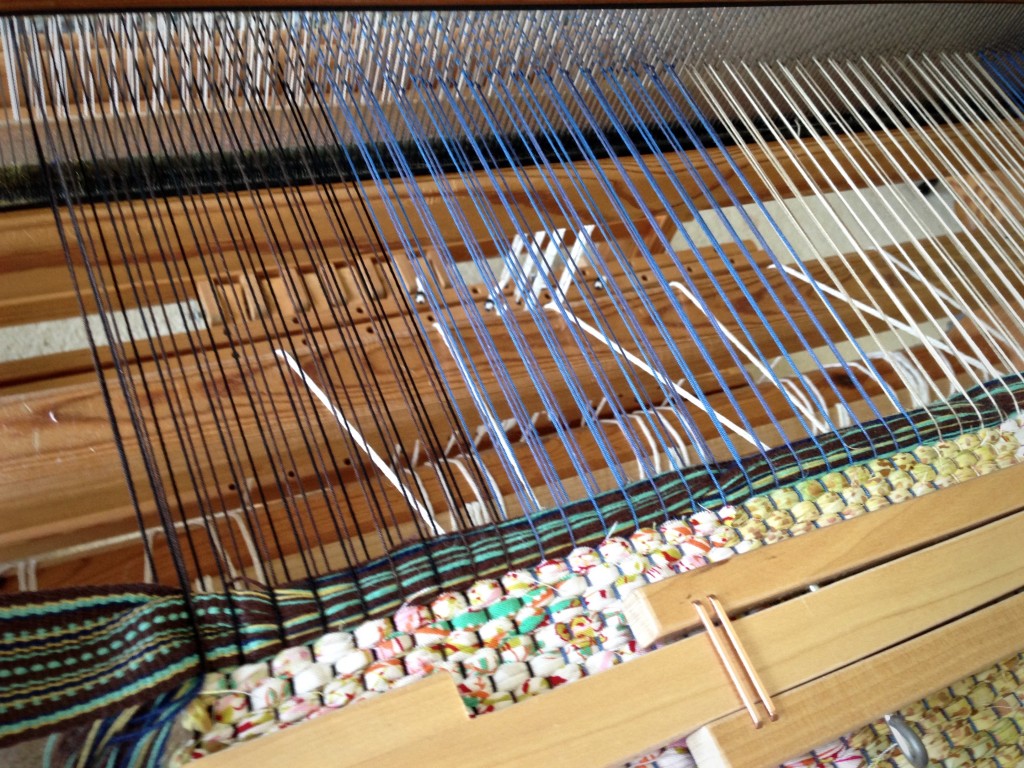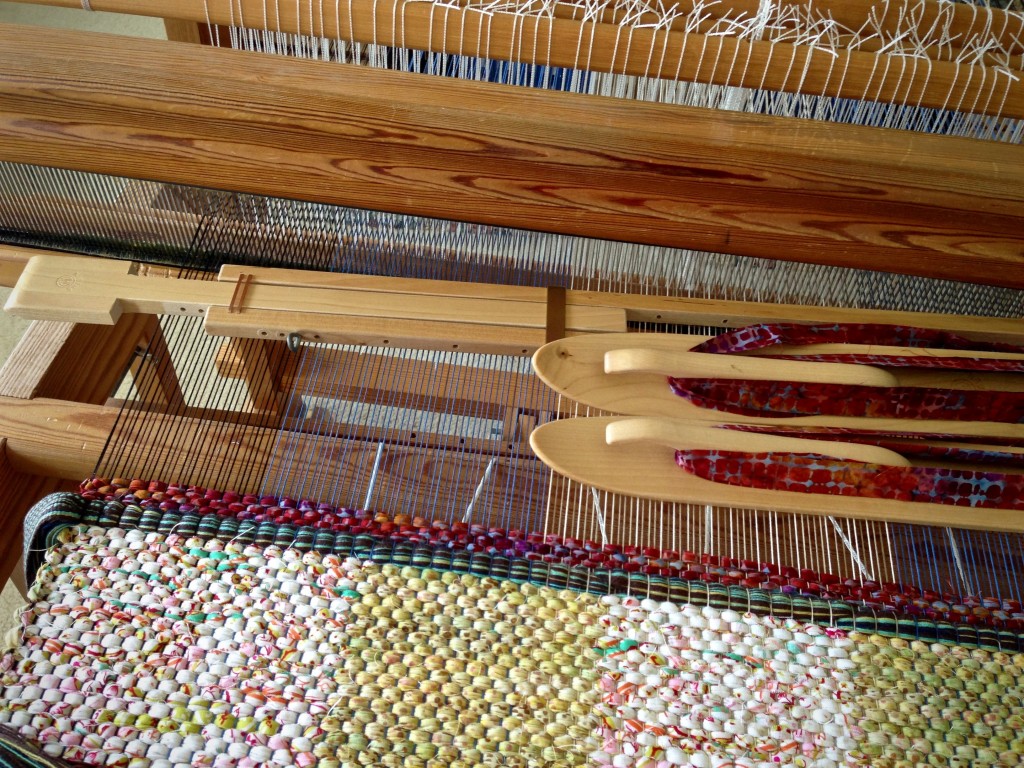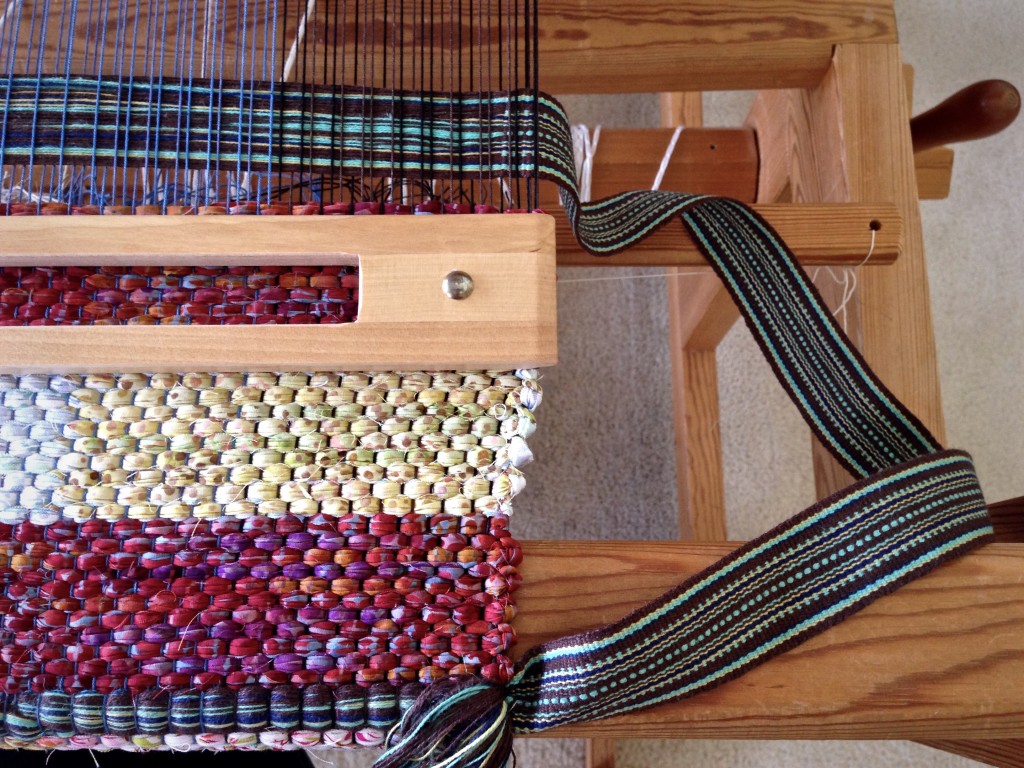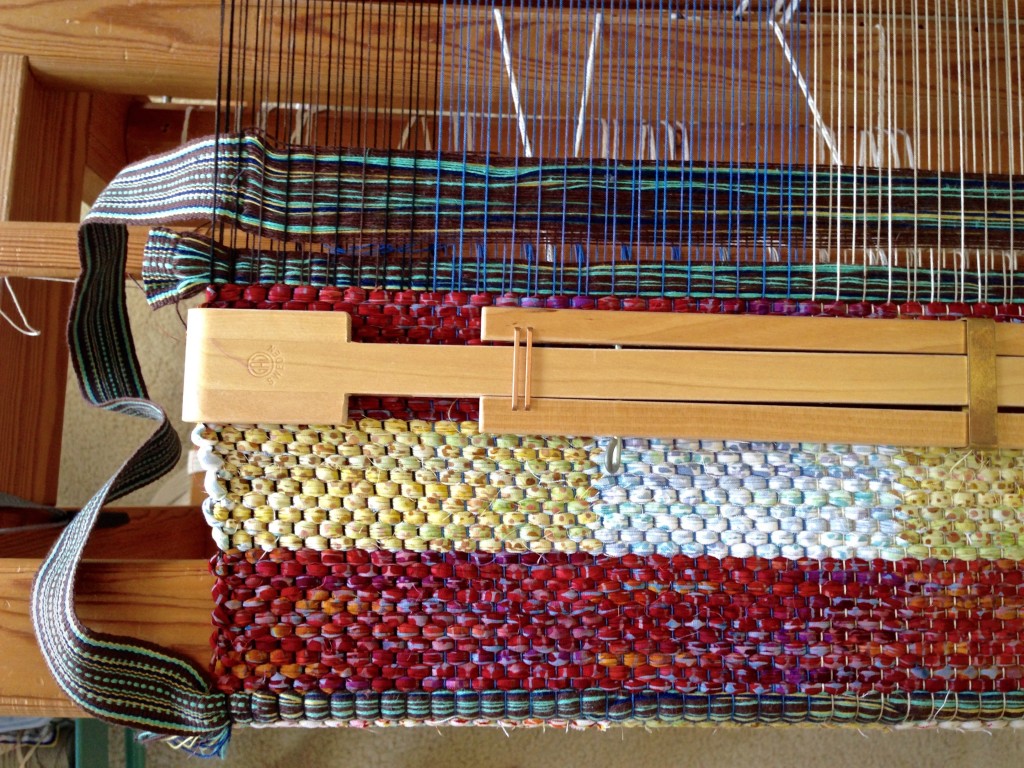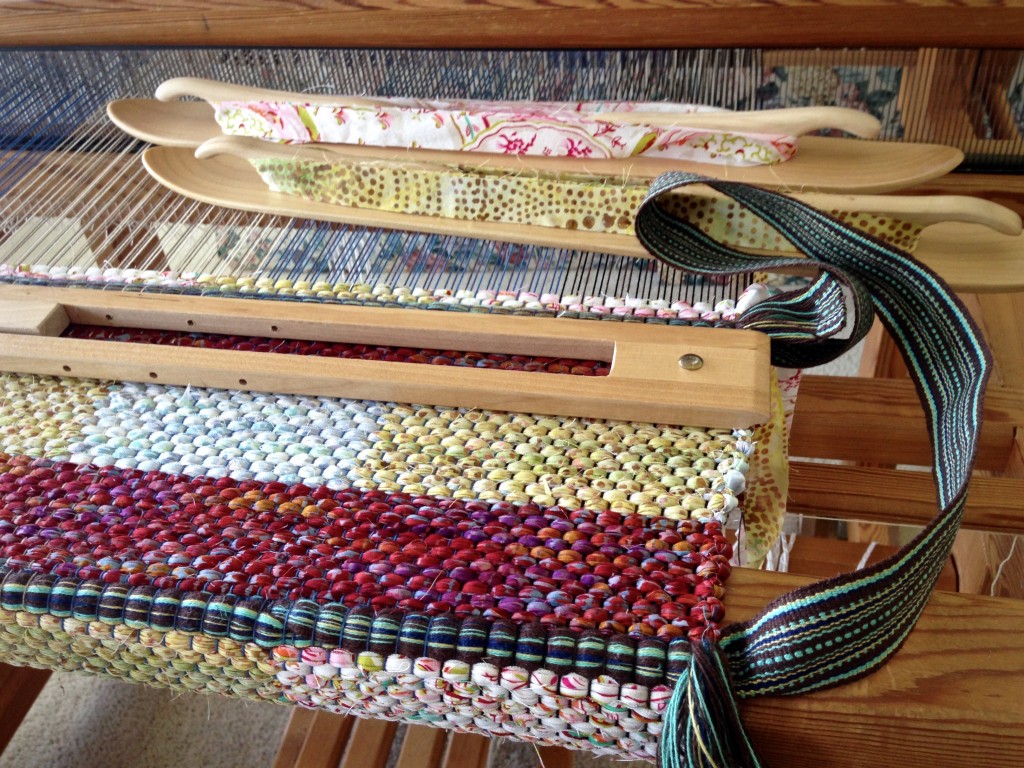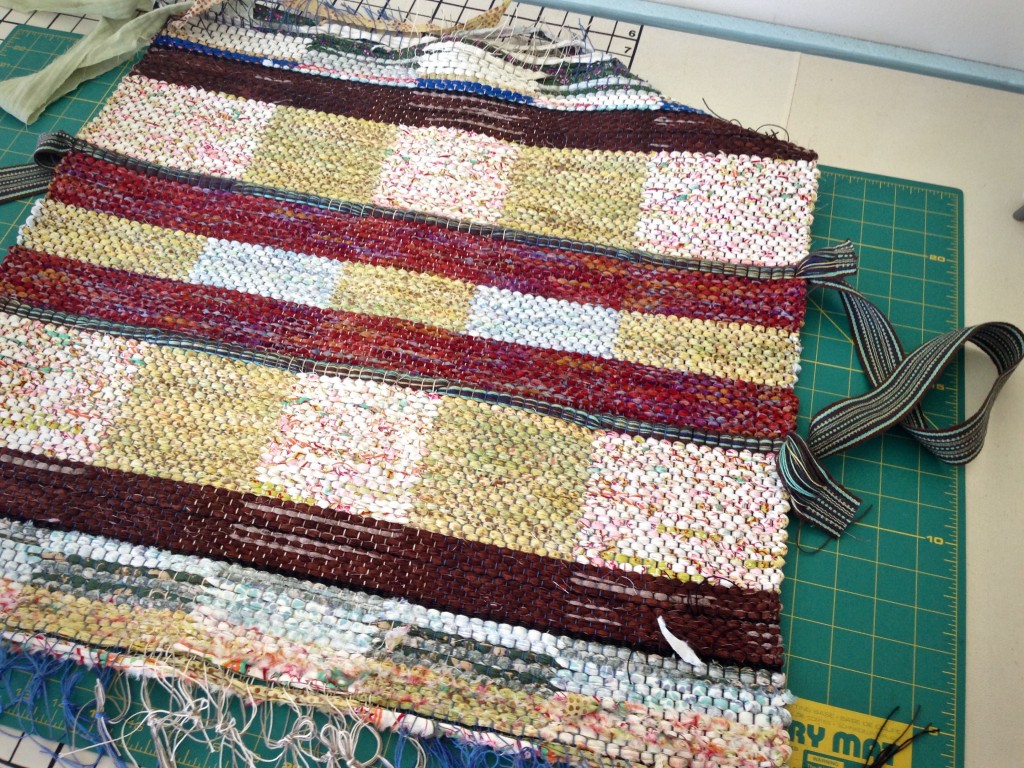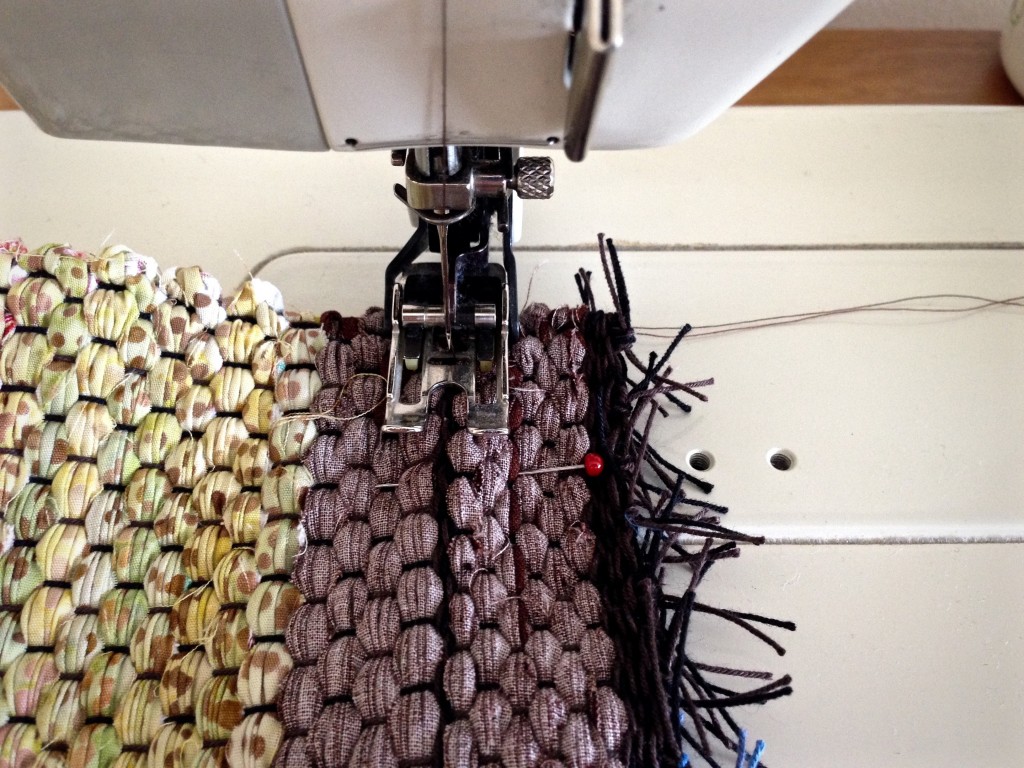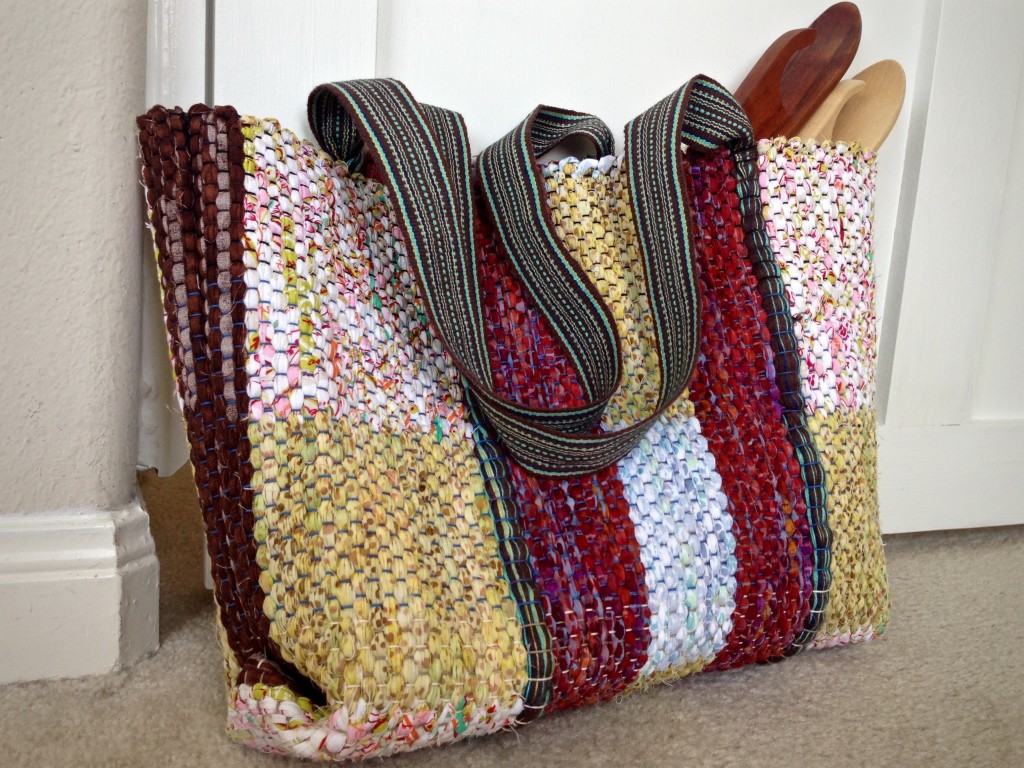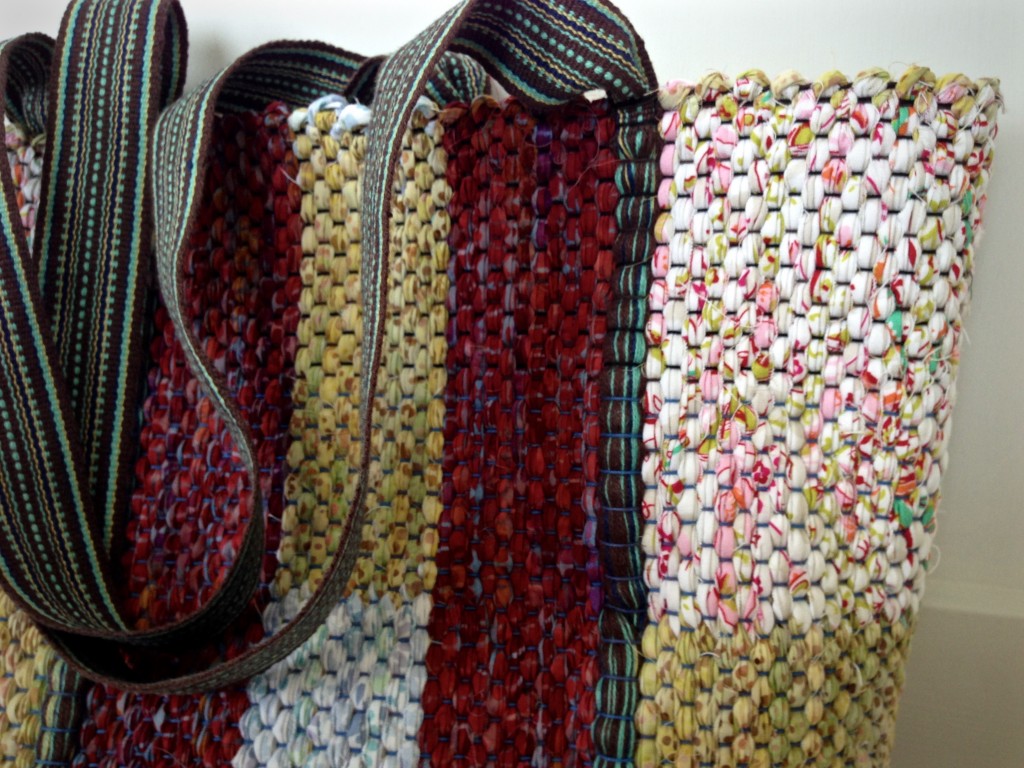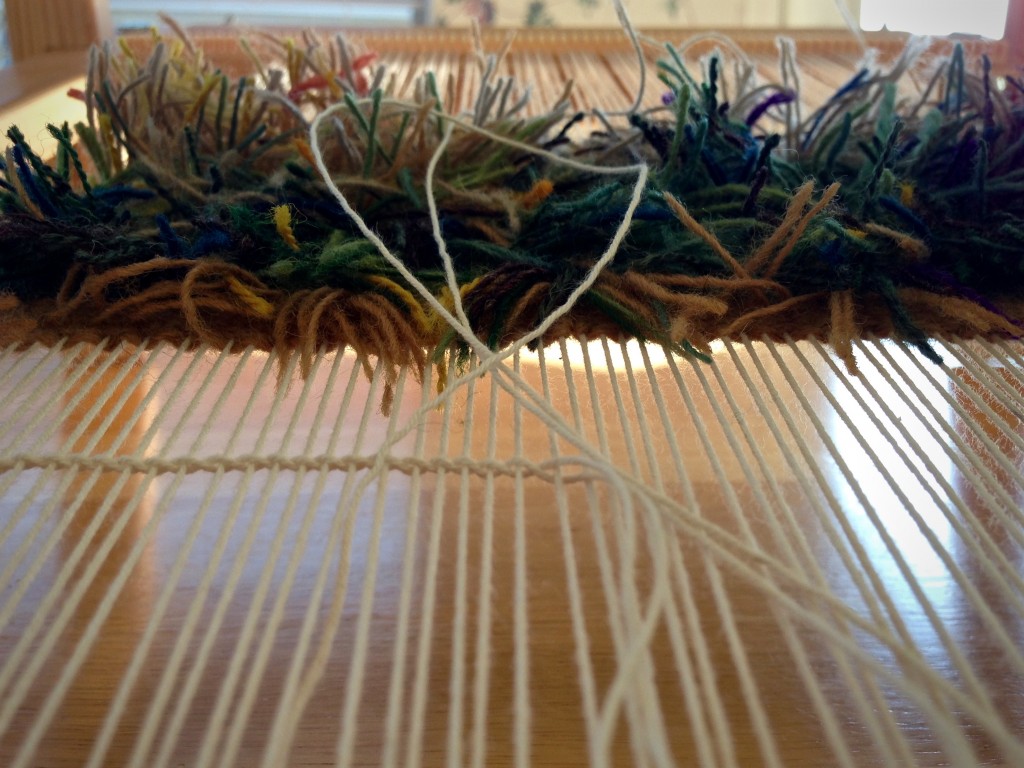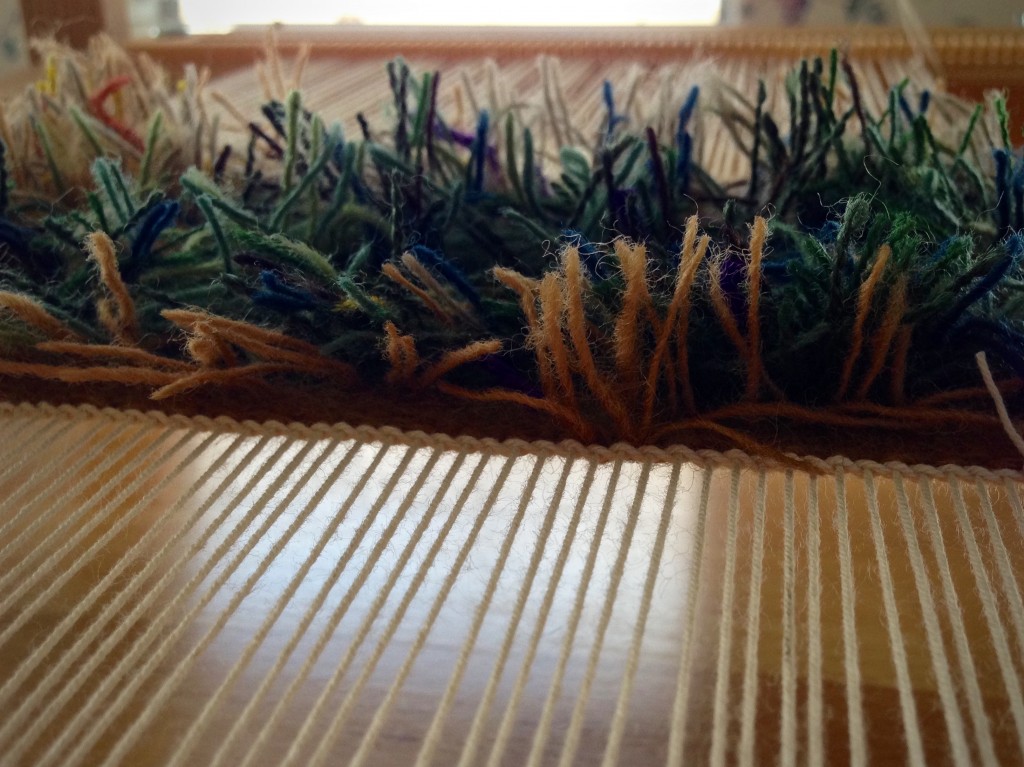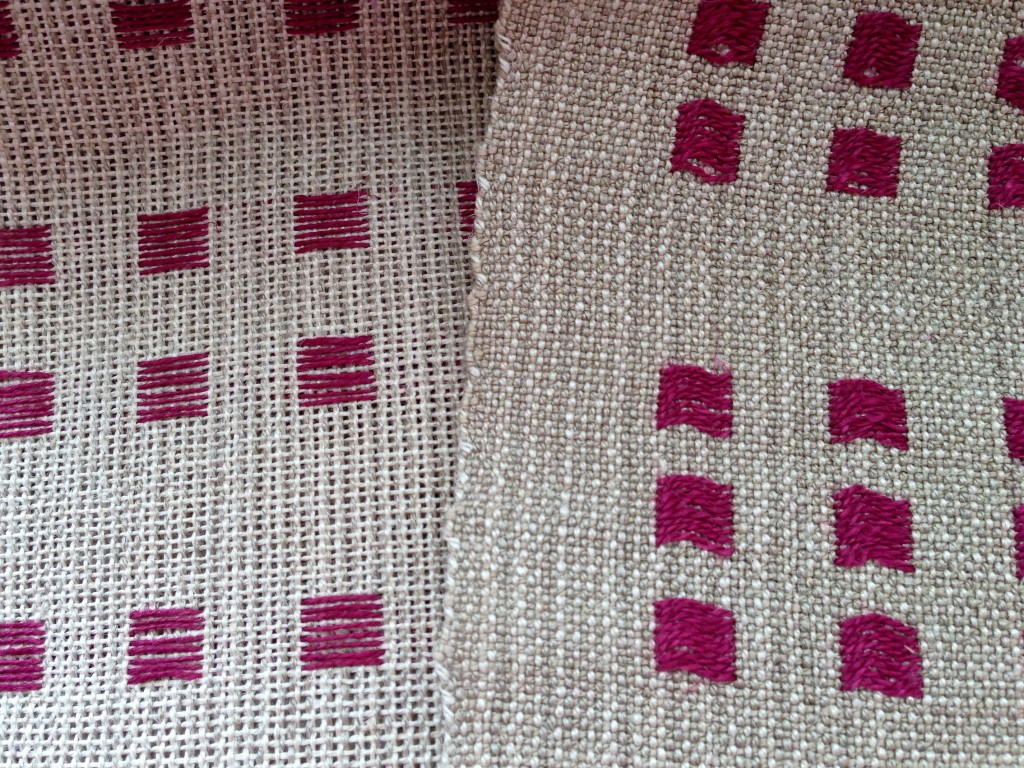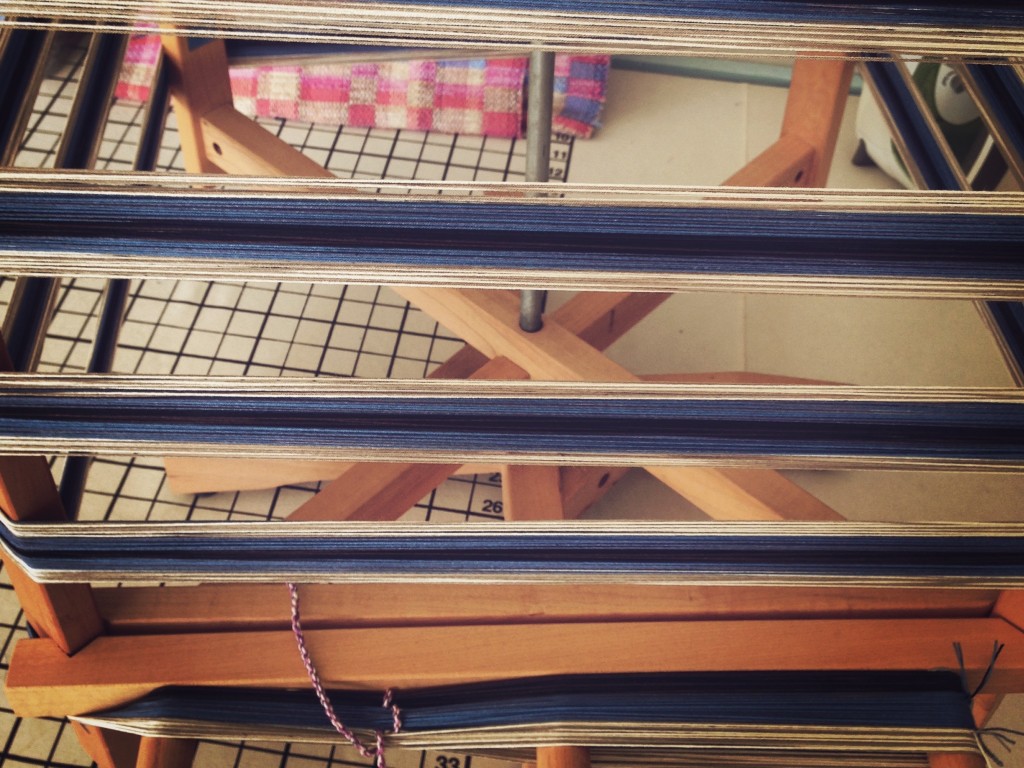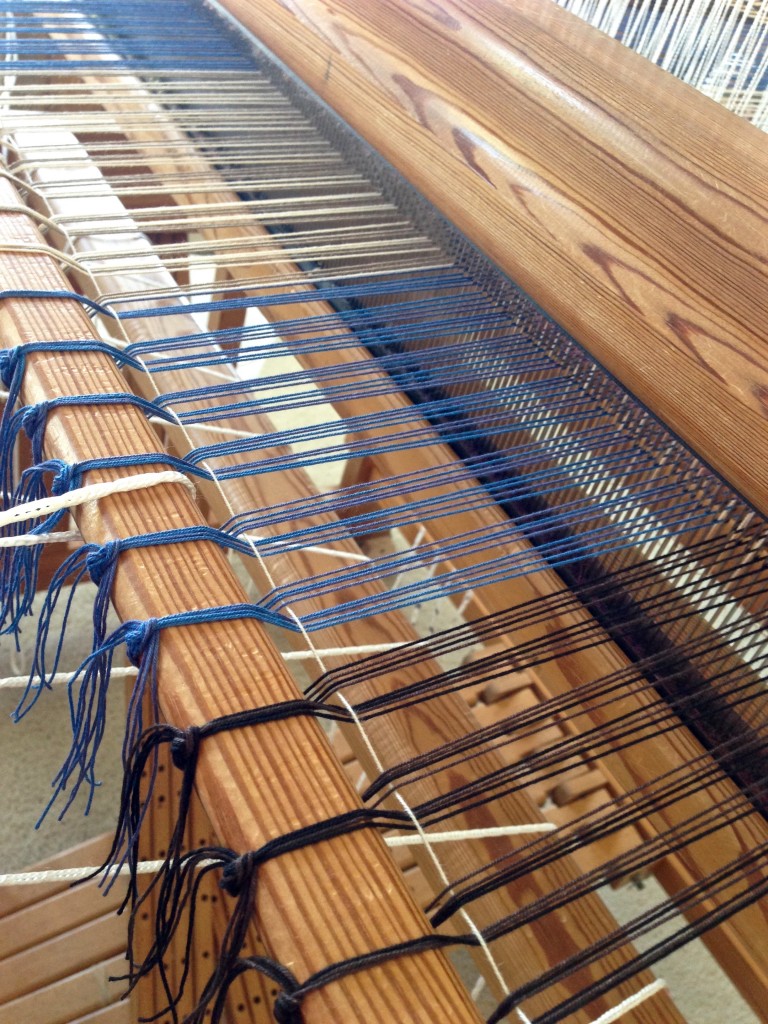If I could do it over, I would put on a shorter warp for this experimental project. I enjoyed weaving plain weave, with the simplicity of one shuttle and one color. I did not enjoy, however, stopping every six inches to stamp the warp with paint. Clearly, I am not a paint person.
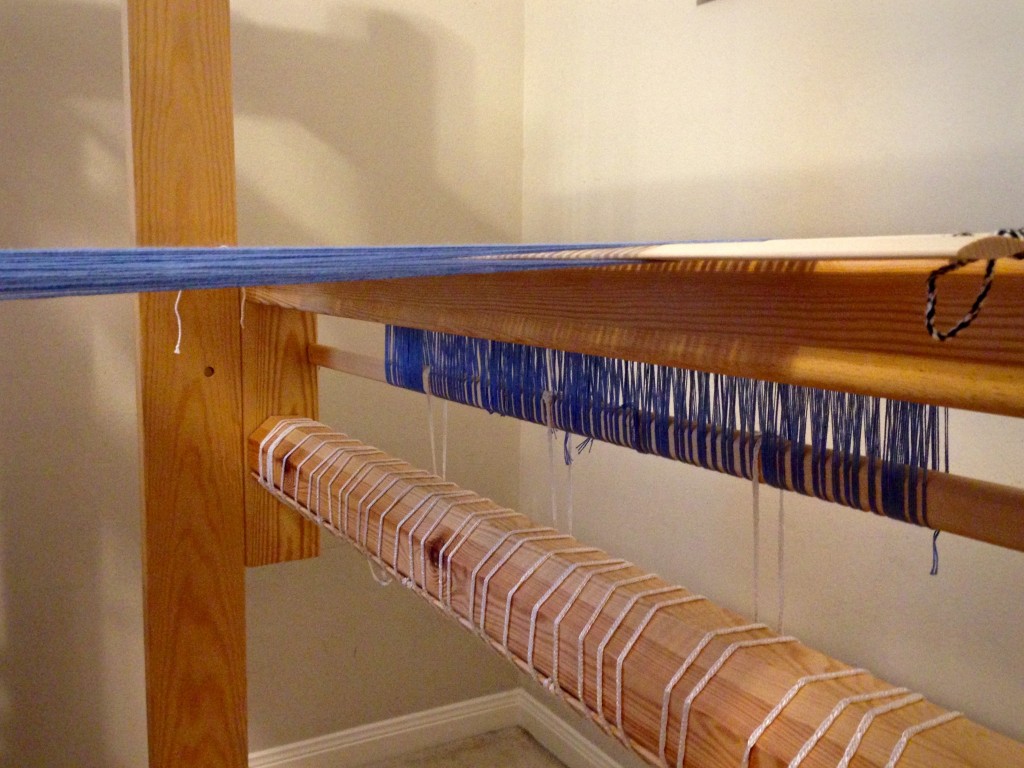
You can guess that I was overjoyed to see the tie-on bar come over the back beam! That hope of finishing propelled me to the end. Of course, I still have work to do–fixing a few floats, wet finishing, and then sewing a tiered skirt. The root of my problem was not that this was long and slow. The root was my uncertainty. Isn’t that always the case? Is all this effort and mess going to be worth it? Will this fabric even work for the skirt I want to make?
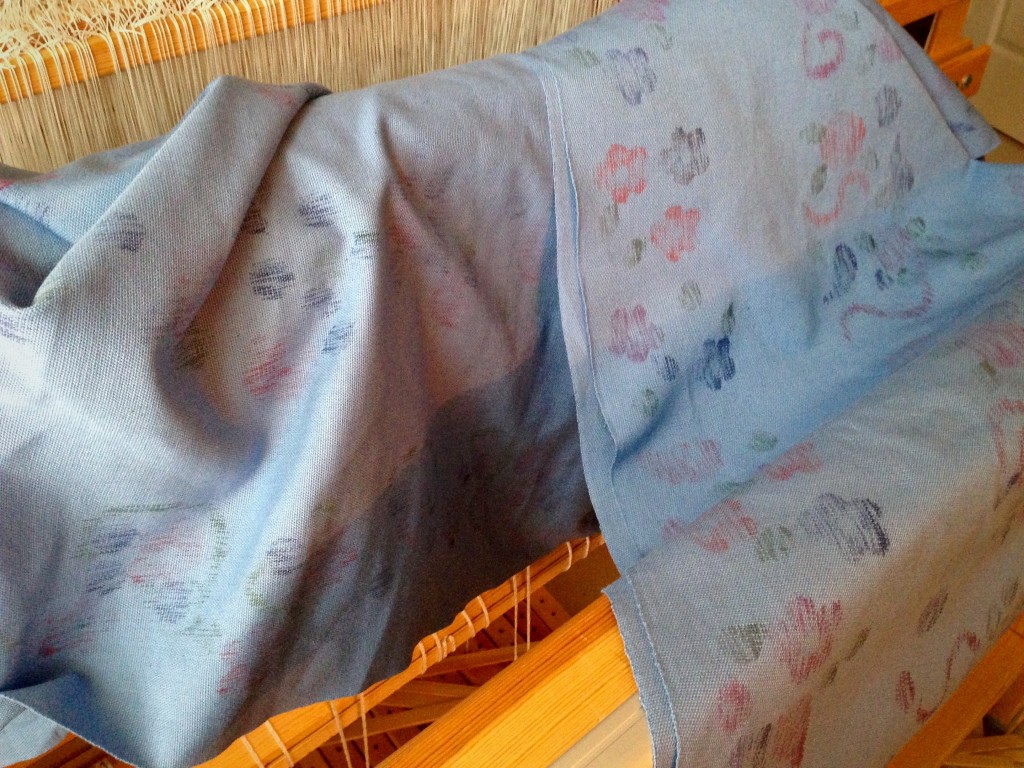
When we are stumbling in the dark, we long for light. It can be discouraging when you are not sure where your decisions will take you. The light of God shines in the darkness, bringing hope. Hope dispels darkness. Much like the tie-on bar at the end of a long warp, when we see hope rounding the corner we know we can make it.
May your path be lit with hope.
By the way, if you are a paint person, I have a set of gently used hand-carved wooden stamps I will send to the first person in the continental U.S. who asks for them. Postage is on me!
Get in Touch to let me know you’d like them.
*UPDATE*
The stamps have been spoken for! Sandy O. is going to use them to experiment on her rigid heddle loom!
Happy plain weaving,
Karen

